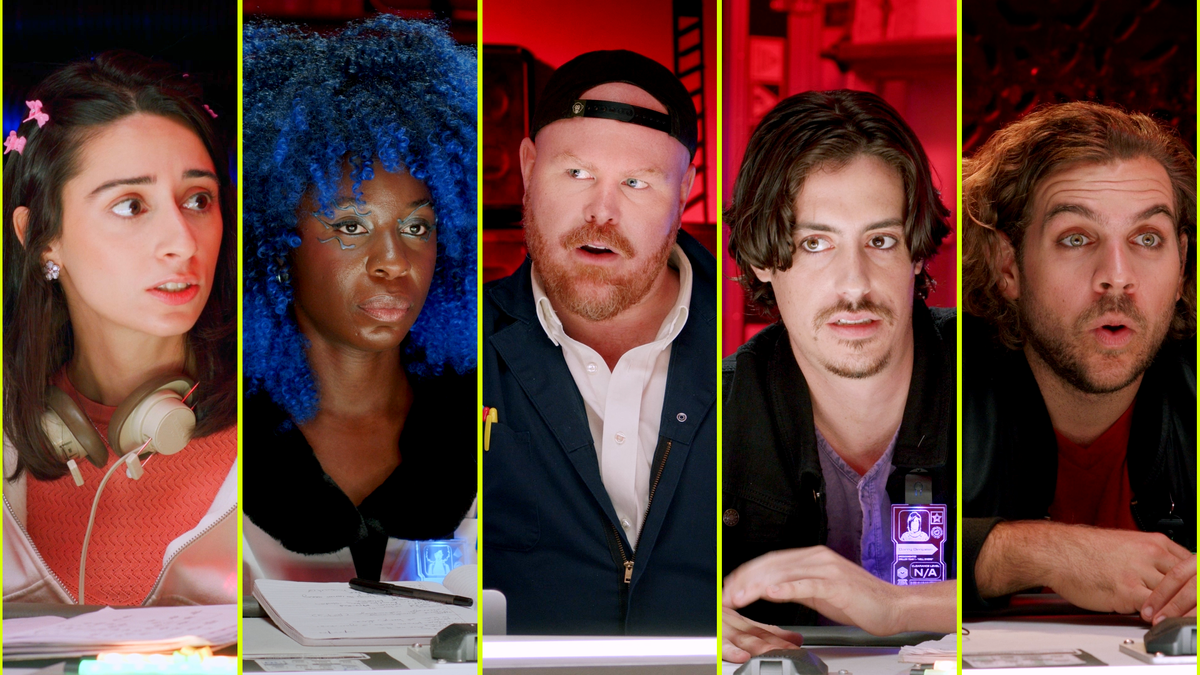The Panic Table yearns for the space mines
If the kids from Stranger Things played Mothership, you’d end up with The Panic Table

Using the aesthetics of an ‘80s space capitalist retrofuture and the production value of a mid-budget indie film, The Panic Table’s visual polish breaks through the saturated actual play field. Created by the new-to-AP production house Failure Island, this in-studio Mothership AP’s technical elements—an eight camera setup, detailed set design complete with a custom table that incorporates the game's mechanics, and post-production editing that borrows visual and aural language from sci-fi horror films and AP alike—are on their own more than many actual plays can achieve. Such a level of investment from a relatively unknown studio is a feat itself (and a huge risk). But any company with enough money can hire a team of creatives to develop a production studio.
What makes Unaccompanied Miners notable is how it uses this cinematic flare and artistry on par with any modern filmmaker to win the audience’s trust. The show's technical production is an integral part of creating the environment for the theatre-of-the-mind story being told. There's a clear aesthetic connection between The Panic Table and other horror AP's, which makes sense given producer Silviana Russo's previous work on shows like Kollok or FearHQ. The Panic Table doesn’t lean on its high quality laurels, but offers them as an access point to elevated storytelling in a niche medium. All together, it lays a foundation for Unaccompanied Miner's true success: its flawed teenage protagonists, what they want from a world that wants nothing from them but their labor, and the means these characters will go to get it.
The Panic Table is set in 2187, an alternate future where the Moon was destroyed at the height of the Cold War. This destruction revealed Dorian, a massive synthetic humanoid made of ancient, eldritch technology—technology which became the progenitor of all androids. 200 years later, corporations now run most of the known universe, as unfettered capitalism is wont to allow. In the years before Unaccompanied Miners begins, a scientific discovery causes 10% of the population to vanish (what is referred to as “The Cost”). Following this galactic tragedy, Doubledine Industrial offers a solution: humanoid replacements for every person who vanished. This solution created a new problem, The Doubledine Dilemma, a diaspora of exiled and rejected androids. To address this, Doubledine Industrial has placed all androids under a seven year lifespan/death sentence disguised as a warranty, one that can only be extended if a corporation chooses to sponsor the android’s life—in exchange for labor, of course.

All of this exposition is given over the course of a six minute long intro by the show’s Warden (Mothership’s facilitator title) Cameron Strittmatter, who also acts as the show’s producer and primary editor. Typically, I’m averse to long-winded monologues establishing lore. However, I was already primed to believe that every choice made on screen was in service of the story. The studio graphic that opened the show, the two and a half minute sequence Strittmatter facilitated at the top of the show—which included a brief introduction to himself, the players, Failure Island Studios, the concept of the show, as well as Mothership—and the subsequent cosmic horror title animation each showed a level of curation that only continued into the story proper.





